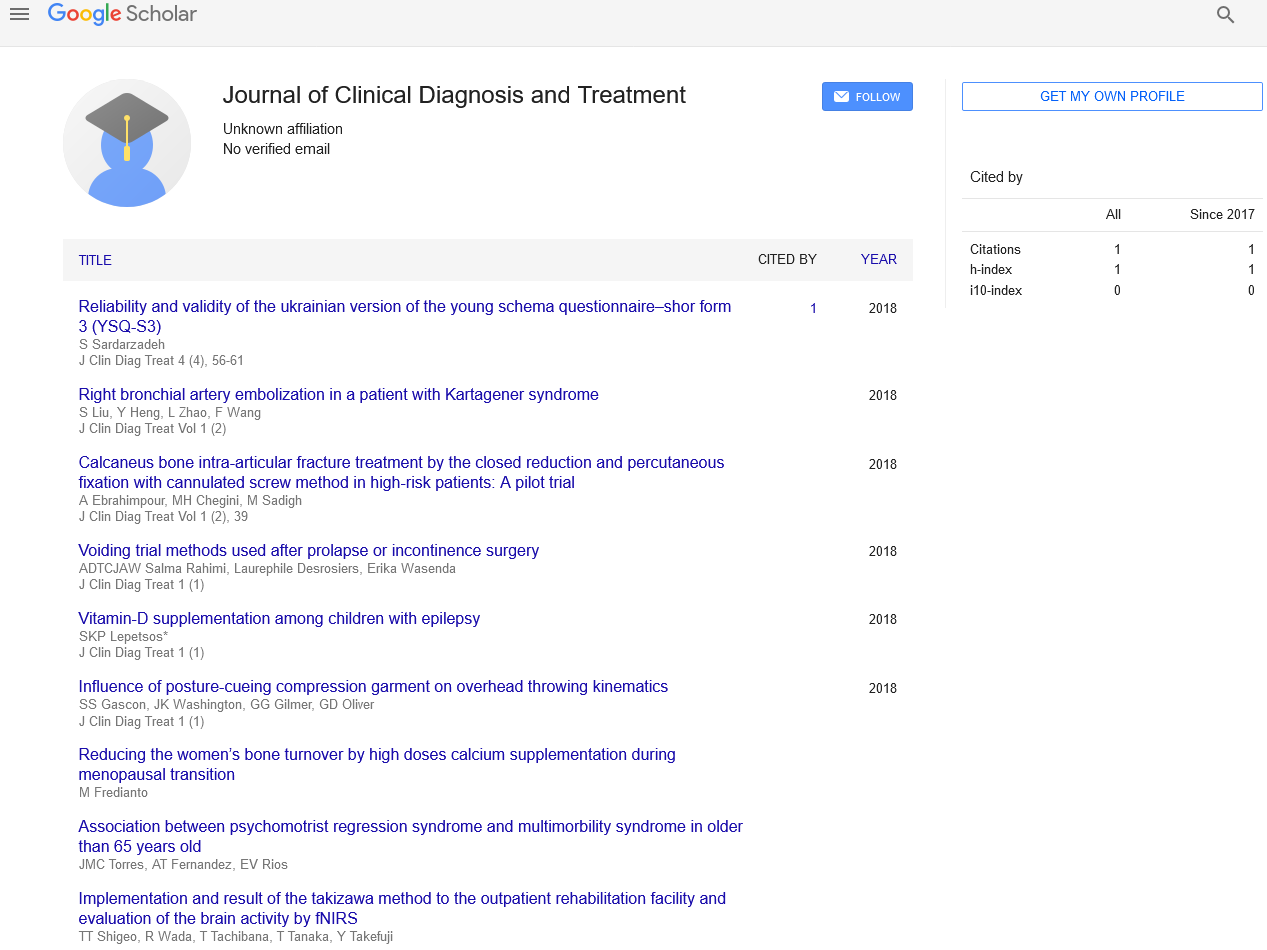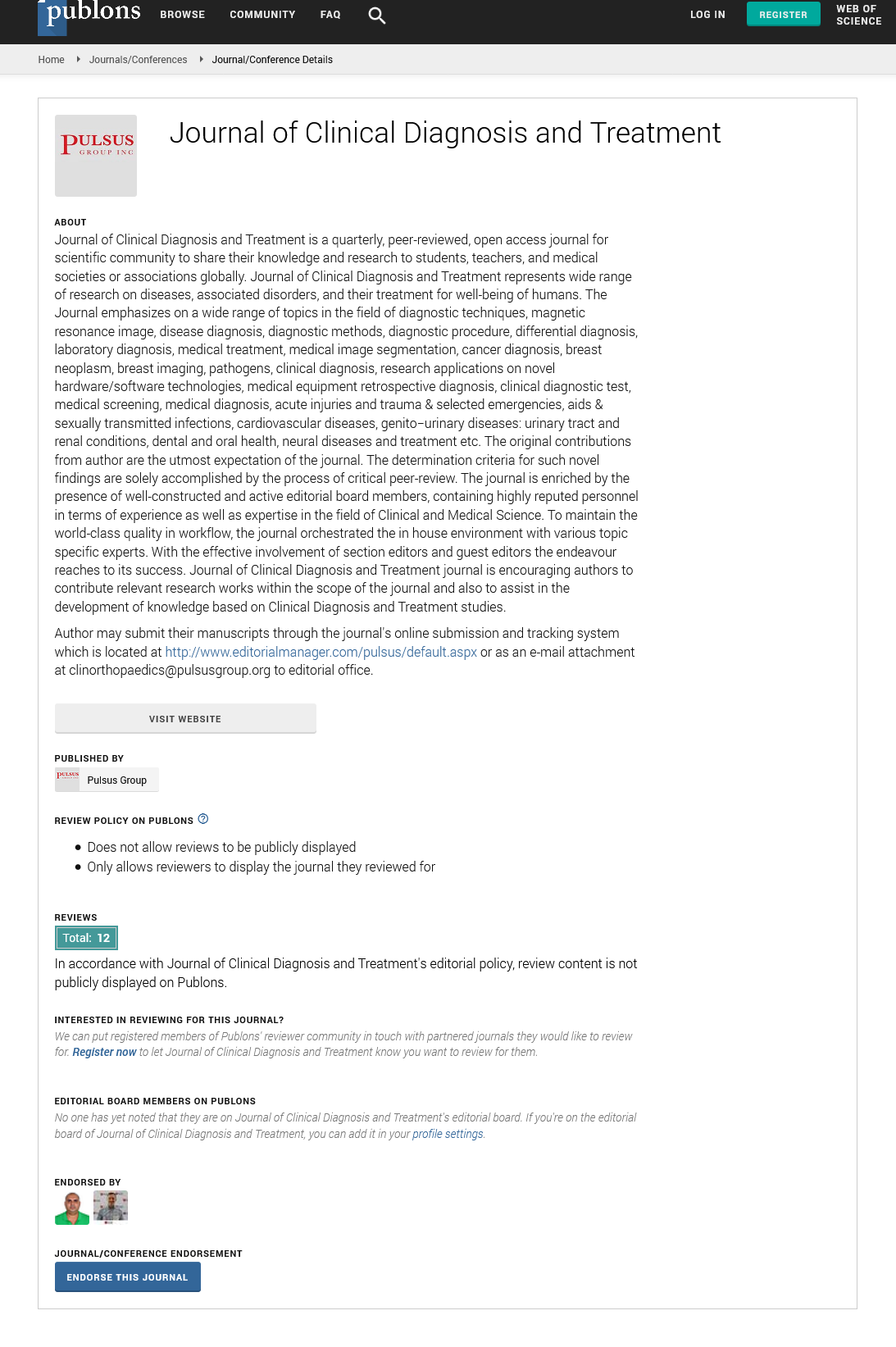Tuberculosis diagnosis and treatment
Received: 03-May-2022, Manuscript No. PULJCDT-22-5311; Editor assigned: 05-May-2022, Pre QC No. PULJCDT-22-5311(PQ); Accepted Date: May 23, 2022; Reviewed: 12-May-2022 QC No. PULJCDT-22-5311(Q); Revised: 19-May-2022, Manuscript No. PULJCDT-22-5311(R); Published: 27-May-2022, DOI: 10.37532/puljcdt.22.4(3)
Citation: Editorial office, Journal Of Clinical Diagnosis and Treatment, UK
This open-access article is distributed under the terms of the Creative Commons Attribution Non-Commercial License (CC BY-NC) (http://creativecommons.org/licenses/by-nc/4.0/), which permits reuse, distribution and reproduction of the article, provided that the original work is properly cited and the reuse is restricted to noncommercial purposes. For commercial reuse, contact reprints@pulsus.com
Abstract
With over 1.5 million confirmed deaths from a single infectious agent in 2018 and an estimated 10 million new cases each year, Tuberculosis (TB) is the biggest cause of misery worldwide. It is important to comprehend what is going on globally in terms of research into the use of digital technology for better TB care and control in light of the World Health Organization's End TB strategy and the pursuit of digital technologies. Treatment for tuberculosis is still difficult because it must be approached in the context of both individual and societal health. Additionally, it has been established that social and economic difficulties are factors that should be taken into account when determining therapy effectiveness. To meet the objectives set forth in the WHO End TB Strategy, early TB identification and treatment are crucial. The most frequent extra pulmonary TB symptom is Tuberculosis Lymphadenitis (TBLA), however in low-incidence areas; the diagnosis might be difficult because of the lack of clinical data and variable clinical characteristics.
Keywords
Tuberculosis Lymphadenitis, treatment resistance, interferongamma, drug-resistant
Introduction
A dangerous infection known as Tuberculosis (TB) typically targets your lungs. Additionally, it can spread to other bodily parts like the brain and spine. It is brought on by a type of bacteria called Mycobacterium tuberculosis.
Types of (TB) Tuberculosis
Latent TB: Although the bacteria are already inside of you, your immune system prevents them from spreading. You are not contagious and you don't exhibit any symptoms. However, the virus is still present and might become active at some point. Your doctor will prescribe drugs to stop active TB if you have HIV, have had an infection within the last two years, have an unusual chest X-ray, are immune compromised, or are otherwise at high risk for reactivation
Active TB: As the bacteria spread, you become ill. The disease can spread to other people. Adults with current TB infections account for 90% of all cases.
Is TB curable?
TB was a major cause of death in the United States during the 20th century. Antibiotics are now used to treat the majority of cases. However, it takes a while. For at least six months to nine months, you must take your prescriptions. TB is still a major global health concern [1]. India is the country with the biggest TB burden in the world, accounting for onefourth of all incident cases annually. To stop the worldwide TB epidemic, India's TB prevention and care efforts must be accelerated [2].
Inequities in healthcare access, treatment resistance, co-infection withthe HIV virus, a huge reservoir of latent infections, and delayed diagnosis are among the obstacles in the fight against TB. The World Health Organization (WHO) End TB Strategy has emphasized early detection and treatment of TB as critical components [3].
Tests and diagnosis for tuberculosis
Skin test: The Mantoux skin test for tuberculin is another name for this. Your lower arm's skin is injected with a small amount of fluid by a professional. They will examine for swelling in your arm after two or three days. You most likely have TB germs if your test results are positive. However, a false positive is also a possibility. When you don't have tuberculosis, a test may indicate that you do if you've had the Bacillus Calmette-Guerin (BCG) vaccine for the disease. If you have a brand-new illness, the results may also be falsely negative, indicating that you don't actually have TB. This test might be administered more than once.
Blood Test: These exams, also known as Interferon-Gamma Release Assays (IGRAs), track the reaction to a small sample of your blood combined with TB proteins.
Tuberculosis treatment
The Brazilian National Campaign against Tuberculosis began in the 1940s, and two antituberculosis medications were employed during that time: streptomycin and para-aminosalicylic acid. Brazil decided to employ an isoniazid and streptomycin twice-weekly regimen in the 1950s. The usage of Isoniazid (H), Streptomycin (S), and Pyrazinamide (Z) for 18 months (the HSZ regimen) was introduced in the 1960s as a result of bacterial resistance and an increase in tuberculosis-related mortality [4, 5].
The US Food and Drug Administration have authorized bedaquiline (TMC-207) and delamanid (OPC-67683) for use in clinical practice after 50 years without new medications for the treatment of tuberculosis. Clinical studies conducted since 2009 have shown that the use of fluoroquinolones, particularly moxifloxacin, in combination with other antituberculosis medications, RHZ and rifapentine, significantly increases the rate of M. tuberculosis culture conversion in the eighth week of treatment, suggesting the possibility of treatment shortening. Tuberculosis prevention:
1. Take all of your prescribed treatment if you have a latent infection to prevent it from becoming active and spreading.
2. Limit your interaction with others if you have active TB. When you laugh, sneeze, or cough, cover your mouth. During the first several weeks of treatment, wear a surgical mask whenever you are among other people.
3. Avoid spending a lot of time in crowded areas with sick individuals if you're visiting a location where tuberculosis is prevalent.
Conclusion
We conclude that groups with substandard housing, drug use, and HIV infection continue to have high rates of tuberculosis infection and illness. An efficient way to deliver highly targeted screening services to a population at substantial risk for disease acquisition and transmission is by connecting a big medical provider with communitybased organizations. Children in nations where TB is prevalent frequently receive the BCG vaccine.
In addition to not always providing infection protection, it is not frequently utilized in the United States. Only kids who can't take antibiotics or who have an active TB infection with a very drug-resistant strain are advised to do so by doctors.
REFERENCES
- Kimani EK, Karumbi J, Gathara D et al. Analysis of survival patterns of TB‐HIV co‐infected patients in relation to timing of art initiation in Kiambu County, 2012‐2016.East African Medical Journal. 2017;94(10):67-76.
- Zumla A, George A, Sharma V et al. The WHO 2014 global tuberculosis report—further to go. The Lancet Global Health. 2015 Jan 1; 3(1):e10-2.
- Marais BJ. Improving access to tuberculosis preventive therapy and treatment for children. International Journal of Infectious Diseases. 2017 Mar 1; 56:122-5.
- Hijjar MA, Gerhardt G, Teixeira GM et al. Retrospect of tuberculosis control in Brazil. Revista de Saúde Pública. 2007; 41:50-7.
- Conde MB, Efron A, Loredo C et al. Moxifloxacin versus ethambutol in the initial treatment of tuberculosis: a double-blind, randomised, controlled phase II trial. The Lancet. 2009 Apr 4; 373(9670):1183-9.






